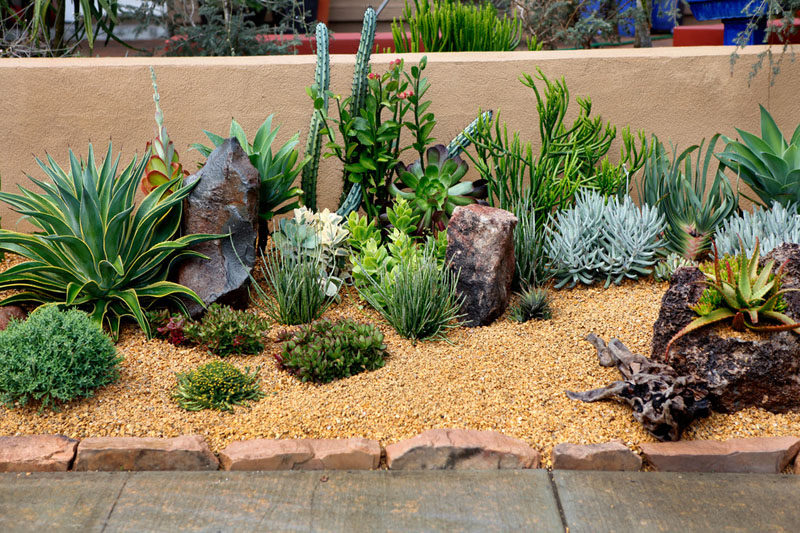How To Do Drought Tolerant Landscaping In Australia

Table of Contents
Introduction
Australia is a country where drought is a regular occurance, even when you live near the coast. Anybody who has a garden has faced challenges due to this one way or the other, at one point or the other. With the climate change at its rise, we have to assume that drought may only increase. So it is time you prepare your entire garden to stand strong against it. Read on to find out how.
How To Create A Drought Tolerant Garden
With just a little bit of planning ahead, creating a drought tolerant garden is going to be pretty simple a task. All you have to do is follow certain procedures Jim’s gardening recommends for you, and you will have a beautiful yet drought strong garden in no time.
Drought-Proof Your Soil
The central participant in a drought tolerant garden landscaping in Mornington is the soil in your garden. Make your soil strong enough and half your job is done.
-
Use A Soil That Is Itself Drought Tolerant:
For a garden to withstand drought, it has to be low maintenance, which means it needs to be healthy and have good enough drainage capabilities. You do want the soil to hold water, but you certainly don’t want your plants to sit in a pool of water where their roots will rot and kill the plants.
You can check this quality yourself. Dig a small hole in the soil, fill it with water, and let it sit overnight. Fill it again the next day, and then check the progress in every hour or so. An ideal soil drainage should be about 2” per hour, but drought-tolerant plants can make it even less.
-
Aerate The Soil:
Use a long spatula or lawn aeration shoes and aerate your lawn properly. This creates holes in your soil to allow air, water, and fertilisers to be absorbed better.
-
Use Soil Wetting Agents:
Use a soil wetting agent which will break down the waxy, water repellent layer that can form on the soil. This agent will utilise any rain or irrigation available by enabling water to penetrate the soil evenly and effectively.
-
Add Organic Matter To Your Soil:
Soil with organic matter can hold more moisture. Regularly mix concentrated organic matter into your soil, such as compost and organic soil improvers.

-
Reduce Fertilisers:
As mentioned above, you need to make the garden low maintenance to prepare it for drought. When you add fertilisers, your plants develop an urge for growing more. This will harm them under conditions of drought when there is a lack of moisture.
-
Use Mulch:
Recycled plant excrement, aka mulch, is the best assistant in plant growth as well as its preservation. Mulch acts as a natural buffer for any kind of temperature change. So it moderates the temperature around your tree to an optimum level. It also retains moisture, and therefore it works wonders in the situation of drought. A mulch of barks and dead leaves is packed with essential nutrients. So it keeps your tree well-fed as well.
Create A Drought Tolerant Lawn
A big part of landscaping in Mornington, Peninsula is the lawn. It takes in a lot of water, which means in order to optimise your garden for drought, you will have to eliminate it, or at the very least, reduce it. You can plant lawn varieties with high tolerance for drought like native Zoysia varieties. You can also replace the lawn altogether with native grass that grows freely (no-mow) and blooming bushes. All you will have to do for beautification is keep them trimmed.
Some more drought-specific lawn maintenance activities that you can take up are:
- Aerating and applying a wetting agent to the lawn just as you would do with the soil.
- Mow the lawn to a higher length to keep the grass healthy. In fact, you can use a mulching mower and leave the clippings to be used as a natural fertiliser and cooling agent.
Be Water Smart
Jim’s gardening plans consider the irrigation system to the highest regards when it comes to saving water. A little planning can take you ahead.
- Water the roots: You can install a soaker hose right below the mulch layer to apply water directly to the roots, whenever water is available. This way, you don’t lose time or water. However, make it a habit to water only roots and not leaves.
- Store rainwater: Install rainwater tanks or collection containers around your home or your garden.
- Water timely: Water your plants early in the morning or at night. This way they can soak up water before heavy evaporation begins and hence it will not get thirsty the rest of the day no matter how hot it gets.
- Water less, but thoroughly: Water your plants less often, ideally once in every two weeks, however, water them thoroughly. Watering thoroughly helps the plants absorb the water to a deep level, but when you water them less often, they are encouraged to store the water and moreover, grow deeper roots. This way they become more resilient to dry weather and drought.
- Make innovative wise choices: For example, you can add a small recirculating fountain. This will not only use the water resources wisely, it will also be aesthetically pleasing.
Maintain Garden Cleanliness
Weeds not only make your garden look ugly, they are big water-thieves. Conduct a regular weed removal procedure for landscaping in Mornington, and keep them away from the plants that you actually want in your garden.
Shade Up
The best way to keep your plants from drying up is of course, keep them away from the real villain – the sun. Keep a track of the sun’s movement throughout the day and use shades accordingly. You can plant tall trees, install shade cloth, or retractable canopies or awnings to achieve this.
Plan Out Your Plants
When you are planning for a certain landscaping in Mornington, Peninsula where water will be scarce, plant trees that will assist you in the endeavour from the beginning. This means avoid water-hungry trees, and plant water-resistant ones.
-
Trees to avoid:
Here we have mentioned a few trees which cannot survive a drought and it is best to avoid them in your garden. In case you already have some of them, you can move all of them to pots and shift them to a more shaded area.
- Avoid tropical plants, like calathea, ferns, at all costs. They drink up all the water that you can get them.
- Plants with fleshy stems or large leaf surface areas, like birds of paradise, bananas, etc. evaporate water too quickly and cannot live in a drought environment.
-
Trees to plant:
To choose what is best for your garden, it is important to consider the climate you have your garden in and the type of soil you have. The smartest idea in a situation like this is planting native trees that naturally thrive with minimal maintenance in your area.
Add more herbs like rosemary, sage, thyme and oregano; succulents like mother-in-law’s tongue, yucca, aloes, sedum and agave; flowering plants like lavender, many salvias, rhaphiolepis, proteas and bougainvillea; grey foliage plants like lamb’s ear, santolina and Senecio ‘Silver Dust’ are some of the drought-resistant plants that you can go for.
Conclusion
Landscaping in Mornington, if done right, will add an exquisite grace to your garden. However, making your garden drought resistant takes a bit more than the regular gardening job. It needs more knowledge as well as more precise procedures. So whenever you feel the need for it, don’t be shy to ask for help from a professional like Jim’s Gardening.





